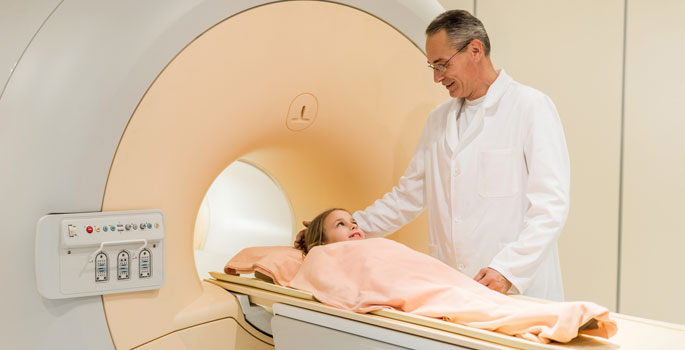
Vanderbilt University neuroscientist James R. Booth is making available the largest known neuroimaging dataset on math development. His goal in doing so is to support the work of other researchers across the world who are working to understand how arithmetic skills develop in childhood.
The dataset is comprised of several hundred brain scans his lab conducted on school-age children performing math problems in a functional magnetic resonance imaging (fMRI) scanner. The data are in a digital repository called OpenNeuro.
A paper in Scientific Data provides a detailed description of the data and its organization. Resesarchers can download it for free and analyze it with the only restriction of having to acknowledge its origin.
Booth is director of the Brain Development Laboratory at Vanderbilt and the Patricia and Rodes Hart Professor of Educational Neuroscience at Vanderbilt’s Peabody College of education and human development. The data are the product of his National Institute of Child Health and Human Development-funded study, “Neural Development and Disorders of Math Processing.”
“I have been involved in hundreds of research projects over the years, but perhaps my biggest legacy to the scientific community will be to share our neuroimaging data that has taken millions of federal dollars to collect over the course of 20 years,” Booth said. “I hope that these data will be used by investigators to confirm our findings, but also to discover new things about how the brain changes over childhood. In this way, it is the grant that keeps giving.”
This dataset has resulted in more than 10 scientific articles published in journals such as Cortex, Developmental Science, Human Brain Mapping and NeuroImage.
“This is important because it allows researchers to answer questions about how mathematic skills, which are critical for success in science, technology and engineering, develop in childhood,” Booth said. “Despite many published reports, there is still opportunity to make important discoveries and reveal critical insights about how children learn mathematics.”
The dataset is unique in three important ways (see fig. 1):
Fig. 1 (Click on the image to enlarge.)
Participants were measured over time
The project used a longitudinal design in which a large number of participants were measured over time. The average age at the first time point was 11 years and the children were followed two years later. This allowed the researchers to use brain measures to predict who will show improvement and who is likely to struggle with learning in the future. This also allows for the development of early intervention to prevent these problems.
Specific and detailed data were collected
Researchers collected detailed history questionnaires and extensive standardized testing from participants. This allowed them to ask very specific questions about how the brain measures are related to home environment, such as socio-economic status, and more general cognitive abilities.
Included localizer tasks to identify cognitive processes
Researchers used so-called “localizer” scans to identify brain areas involved in verbal and quantity processes, which are associated with solving multiplication and subtraction problems, respectively. Participants made rhyming judgments to tap into verbal processing brain areas and numerosity judgments to tap into quantity processing areas.
“There are tons of additional questions that can still be asked and answered using this dataset,” said Macarena Suarez-Pellicioni, Vanderbilt post-doctoral researcher in the Brain Development Lab and co-author of the study. “For example, most of our research has focused on activation-based measures, with less focus on how connections between brain areas change over time and how these changes are related to cognitive ability or math skill. The use of large-scale network approaches is leading to fundamental insights in brain organization and our dataset could potentially answer these types of exciting questions.”
Why sharing matters
An important number of published findings cannot be reproduced or replicated, a problem that the research community is facing and that can be mitigated by sharing data. The sharing of these data will allow researchers to reproduce the findings reported in the published papers from The Brain Development Laboratory and will allow researchers to try to replicate their own findings using this new dataset.
The National Institute of Child Health and Human Development (R01 HD059177) funded the initial research and also supported it through a special program dedicated to the sharing of data (R03 HD093547). The Brain Development Laboratory is working to share more data in the near future.





